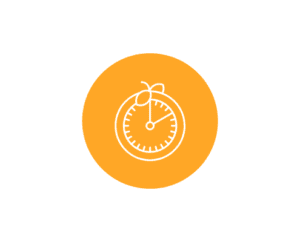3 Techniques To Improve Focus At Work
Nowadays, it’s extremely hard to maintain focus when our attention can be easily divided. The pressure of completing tasks, staying off social media and giving each project your undivided attention is proving harder as technology develops and distractions increase. Therefore, it is important to use tools to maintain your focus during your workday. During our previous For Purpose Tuesday learning seminar, we outlined some useful techniques to improve your efficiency whilst working.
3 techniques to improve your focus at work:
1. The Eisenhower Matrix

The Eisenhower Matrix is a task management tool that helps organise and prioritize tasks by urgency and importance. By using this tool at the start of each day, you can divide your tasks into four boxes based on the tasks to do first, the tasks to schedule for later, tasks you’ll delegate, and the tasks you’ll delete. This is a great tool for de-cluttering your mind, focusing on top priorities and ensuring your energy is assigned to significant projects. This is particularly useful at the start of the week, when upcoming tasks can seem overwhelming.
2. Pomodoro Technique

The Pomodoro Technique splits tasks into 25 minute intervals, followed by a 5 minute break. This is extremely useful if you like working in small bursts of energy and enjoy setting your projects set against a timer. A useful website is Pomofocus.io, where you can list each task at the start of your day to hold yourself accountable. It also provides an estimated finish time, which is good for setting realistic expectations around what you can complete each day. Upon using this technique repetitively, it helps gain a better understanding of how long each task typically takes. Therefore, the Pomodoro technique helps your time management skills in the long run.
3. Habit Stacking

According to James Clear, author of best-selling book, ‘Atomic Habits‘, it takes 66 days for a habit to become automatic. For routine aspects of your work, it makes sense to create habit stacks.
For example, creating a habit to start your day by checking emails, flagging important items, creating a to-do list, inserting them into your Eisenhower Matrix and implementing ‘Urgent & Important’ tasks into pomofocus.io, you have created your first daily habit stack.
The idea behind habit stacking is that they’re easy to follow, easy to implement and don’t require significant brain power. After routinely doing so, these positive habits should become automatic. It’s important to remember that a habit stack is personal to how you work. This may vary entirely depending on the individual. It’s important to remember your learning style and how you work most efficiently, depending on your role and working environment.
Maintaining focus throughout the day can be difficult. However, with these techniques, you should be able to identify your priorities more easily and stay on track. Remember, minimising distractions at the beginning of your day, such as putting your phone on airplane mode and working in a suitable environment, if possible, should all help your focus throughout the work day.
“Attention management is the art of focusing on getting things done for the right reasons, in the right places and at the right moments.” – focuswise.com.
Contact Us
Are you considering adding graduate talent to your team and require support, graduate development and learning opportunities? Contact Fergal O’Sullivan, Director of Talent Management, at fergal.osullivan@forpurpose.ie. For more information on the For Purpose Graduate Programme, visit our website here.



